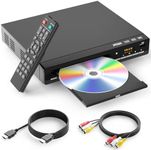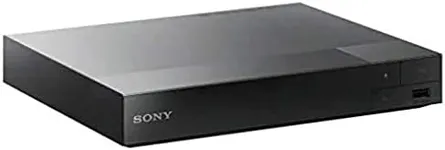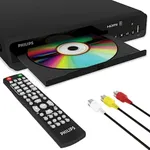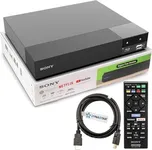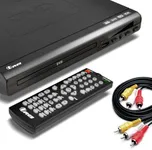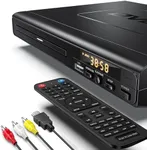Buying Guide for the Best Multi Region Dvd Players
Choosing the right multi-region DVD player can be a bit overwhelming, but with the right information, you can make an informed decision that suits your needs. Multi-region DVD players are designed to play DVDs from different regions around the world, which is great if you have a collection of DVDs from various countries or if you travel frequently and want to watch DVDs from different regions. Here are some key specifications to consider when selecting a multi-region DVD player.Region CompatibilityRegion compatibility refers to the ability of the DVD player to play discs from different regions. DVDs are coded by region to control the release of movies and other content. A multi-region DVD player can play discs from any region, which is important if you have DVDs from different parts of the world. When choosing a player, ensure it explicitly states that it supports all regions (Region 0 or Region Free). This will give you the flexibility to play any DVD regardless of its origin.
Video Output FormatsVideo output formats determine how the DVD player connects to your TV and the quality of the video signal. Common formats include HDMI, component, composite, and S-video. HDMI is the most modern and provides the best quality, supporting high-definition video and audio. Component and composite are older formats with lower quality. If you have a modern TV, look for a DVD player with HDMI output for the best viewing experience. If you have an older TV, ensure the player has the appropriate connections.
Audio Output OptionsAudio output options are important for connecting the DVD player to your sound system. Common options include digital optical, coaxial, and analog outputs. Digital optical and coaxial provide high-quality audio and are ideal for connecting to modern sound systems. Analog outputs are suitable for older systems. Consider your current audio setup and choose a DVD player with compatible audio outputs to ensure you get the best sound quality.
Playback FormatsPlayback formats refer to the types of discs and files the DVD player can read. Besides standard DVDs, some players can also play CDs, MP3s, JPEGs, and other formats. This is important if you want to use the player for more than just DVDs, such as listening to music or viewing photos. Check the specifications to ensure the player supports the formats you need. If you have a diverse media collection, look for a player with broad format compatibility.
UpconversionUpconversion is a feature that enhances the quality of standard DVDs to near-HD quality. This is important if you want to improve the viewing experience of your existing DVD collection on a high-definition TV. Players with upconversion can make older DVDs look better on modern screens. If you have a large collection of standard DVDs and a high-definition TV, look for a player with upconversion capabilities.
ConnectivityConnectivity options include USB ports, SD card slots, and network connections like Wi-Fi or Ethernet. These features allow you to play media from external devices or stream content from the internet. USB ports and SD card slots are useful for playing files directly from storage devices. Network connections enable access to online services and streaming. Consider how you plan to use the DVD player and choose one with the connectivity options that match your needs.
Size and DesignSize and design are important for fitting the DVD player into your entertainment setup. Players come in various sizes and styles, from compact models to larger units with more features. Think about where you will place the player and choose one that fits comfortably in your space. Also, consider the design and aesthetics to ensure it matches your other equipment and decor.

